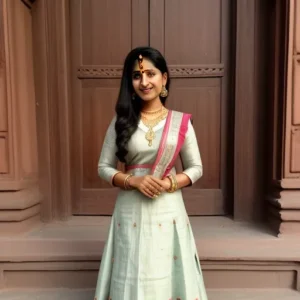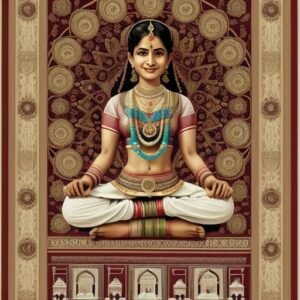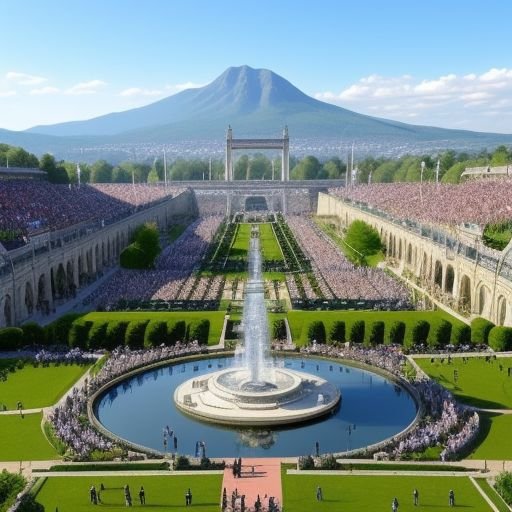India’s Cultural Symphony: A Dive into the Splendid Unity and Diversity
India’s Cultural Symphony
India, often referred to as the epitome of ‘Unity in Diversity’, is a land with an incredible fusion of cultures, religions, languages, and cuisines.

In this article, we will explore how India’s rich tapestry of cultural diversity enhances its unity, touching upon its complex patchwork of traditions, art forms, festivals, and cuisines, and the lessons that could be learned from this mosaic.
A Multi-Lingual Melody
Despite being a single country, India is home to 122 major languages and 1599 other languages.
The harmony in linguistic diversity
“India – The land of Vedas, the remarkable works contain not only religious ideas for a perfect life but also facts which science has proved true. Electricity, radium, electronics, airship, all were known to the seers who founded the Vedas.” – Ella Wheeler Wilcox
The linguistic diversity in India is a hallmark of its rich cultural heritage. Throughout the country, you can find a myriad of distinct local dialects and scripts. English and Hindi may be the official languages, but the regional languages are also given importance in respective states. This diverse linguistic culture has led to the growth of literature in different regional languages and has been a vital source of creativity and innovation.

- Bengali literature is renowned worldwide, especially for its contribution to the works of Rabindranath Tagore, India’s first Nobel laureate.
- The Malayalam literature realm boasts of legends like MT Vasudevan Nair and OV Vijayan.
- Tamil literature holds a distinct place with a body of work dating over 2000 years.
This linguistic diversity prompts mutual respect and fosters unity among people while maintaining their individuality.
The Palette of Religions
India’s religious texture is a vibrant palette comprising several major religions such as Hinduism, Islam, Christianity, Sikhism, Buddhism, and Jainism.
The interweaving of distinct traditions
Religious diversity in India is not just about the existence of multiple religions, but how these religions and their practices are intertwined, leading to a unique cultural mosaic. Respecting and celebrating each other’s festivals and traditions is a common sight in India, underlining the unity inherent in its diversity.

Examples of inter-religious unity include:
- The celebration of ‘Paryushana’, a Jain festival by Hindus in Rajasthan.
- The widespread practice of ‘Sufism’, an Islamic mystical tradition, among people of various religions.
These are examples of how religion, instead of dividing, can foster unity in a diverse country like India.

The Cornucopia of Cuisines
Indian cuisine is as diverse as its linguistic and religious tapestry. Each region, each state, and often each district in India brings a unique flavor to the Indian culinary spectrum.
The amalgamation of flavors
Indian cuisine is the result of thousands of years of various groups and cultures interacting with the subcontinent, leading to a diversity of flavors and regional cuisines.
- North India is famous for its rich and creamy curries, bread, and sweets.
- In the South, rice-based dishes like dosa, idli, and biryani are popular.
- The West is famous for its snacks while Eastern India is renowned for its sweets.
Yet, despite the diversity, the cuisine remains profoundly Indian, another manifestation of the mark of unity in diversity.
Conclusion: The Melody in the Chaos
Through language, religion, and cuisine, India demonstrates a compelling illustration of unity in diversity. The manifold cultures and traditions coexist and intermingle, creating a unique mosaic that is India. The concept of unity in diversity is deeply embedded in India’s heart, acting as a beacon of harmony amid diversity.

As a call to action, let us all strive to celebrate diversity in our communities, fostering unity and harmony, just as India showcases in her day-to-day life. It’s through understanding and appreciating our differences we realize how, at the core, we are all alike – a lesson the world can borrow from India’s rich cultural tapestry.
As the famous Indian poet, Rabindranath Tagore once said –
“The highest education is that which does not merely give us information but makes our life in harmony with all existence.” (India’s Cultural Symphony)
Learn More- A Layman’s Guide to Identifying Genuine Kanjivaram Silk Sarees




